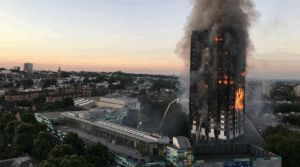The NSW Design and Building Practitioners Act has changed the way facade remediation projects are approached in New South Wales. For strata committees, building managers, and owners corporations, it’s no longer just about fixing a problem — it’s about meeting strict compliance rules, ensuring safety, and delivering long-term value.
In this guide, we’ll break down how the Act applies to facade remediation NSW, what it means for your team, and how to keep your project fully building compliance NSW from start to finish.
Understanding the NSW Design and Building Practitioners Act
The Act was introduced to lift standards across the building industry. For facade works, it means:
- Regulated design work must be done by a registered design practitioner.
- Building work must be carried out or supervised by a registered building practitioner.
- Both designs and completed works must be formally declared as compliant with the Building Code of Australia and facade safety regulations NSW.
In practice, this applies to most facade defects remediation jobs, whether you’re replacing cladding, repairing concrete, or carrying out a major repaint.
Key Roles You’ll Need on Your Project
Specialist Design Practitioners NSW
Depending on your scope, this may include:
- A facade engineer NSW to assess and design repairs.
- A structural engineer to review load impacts.
- A waterproofing expert to prevent future water ingress.
Registered Building Practitioners
They’re responsible for delivering the facade remediation process safely, coordinating trades, and keeping works aligned with approved designs.
Owners Corporations and Strata Committees
You’re in charge of appointing qualified professionals and ensuring compliance documentation is in place.
The Facade Remediation Process Under the Act
Step 1: Assess and Scope the Works
Start with a facade compliance checklist to find defects and risks. Identify if the project meets the definition of regulated works under building legislation NSW.
Step 2: Engage the Right Practitioners
Check that your design practitioners registration is valid. Appoint a specialist design practitioner NSW early to avoid delays.
Step 3: Prepare and Lodge Designs
Your design must specify methods, materials, and safety measures. Submit via the NSW Planning Portal where required.
Step 4: Deliver the Works with Oversight
Building practitioners obligations include supervising works and keeping records — photos, reports, and compliance notes.
Step 5: Lodge Compliance Declarations
When the job is complete, both design and building practitioners must declare compliance with design and building certification requirements.
Facade Works Covered by the Act
Common examples include:
- Cladding replacement.
- Concrete repairs and protective coatings.
- Glazing and frame upgrades.
- Sealant renewal.
- Full facade repainting with specified coatings.
Often, these works are triggered by visible damage, safety risks, or a proactive maintenance strategy.
The Risks of Ignoring Compliance
If you skip the requirements, you risk:
- Fines and stop-work orders.
- Problems obtaining occupation certificates.
- Legal liability for defects.
- Even personal liability for committee members.
How CPR Keeps Your Project Compliant
At CPR, we build compliance into every facade remediation NSW project:
- SFS360® inspections capture every defect in detail.
- SE2EPC® project care tracks, documents, and certifies all work.
- Scaffold-Free™ systems like MARS™, PEARS®, and SkyPod® allow safe, efficient access.
- We work hand-in-hand with specialist design practitioners NSW to get designs right from the start.
This ensures your project meets building work regulation NSW without unnecessary cost or delays.
Tips for Strata Committees
- Use a facade compliance checklist at the start.
- Lock in your practitioners early.
- Get complete design documents before work starts.
- Choose contractors with proven high-rise and NSW construction law compliance experience.
- Keep all compliance documents in one accessible digital location.
Final Thoughts
The NSW Design and Building Practitioners Act has raised expectations for facade projects. Working with accredited professionals and following a clear process is the safest way to protect your building’s safety, compliance, and value.
For expert guidance, work with CPR Facade Upgrade Specialists — where compliance, quality, and safety come standard.






